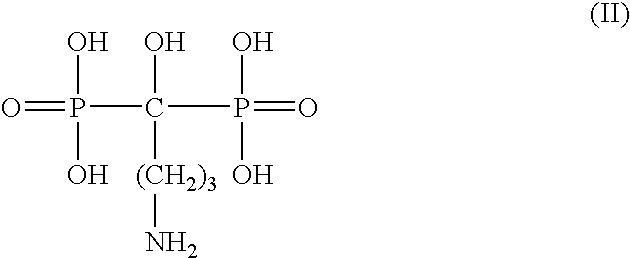Method of treating acute coronary syndromes
a technology for acute coronary syndrome and treatment, applied in the field of acute coronary syndrome treatment or management, can solve the problems of unstable angina, acute myocardial infarction, stroke, and coronary artery disease as the leading cause of death, and achieve the effects of stabilizing the patient's coronary syndrome condition, reducing the amount of phagocytic cells, and inhibiting the activity of phagocytic cells
- Summary
- Abstract
- Description
- Claims
- Application Information
AI Technical Summary
Benefits of technology
Problems solved by technology
Method used
Image
Examples
Embodiment Construction
[0034] Phagocytic cells, particularly macrophages and monocytes, are involved in the cause and / or pathology of some coronary syndromes. Macrophages / monocytes degrade the fibrous caps of plaques through the secretion of various substances that not only decrease cap thickness, but also serve to recruit additional macrophages / monocytes to the area. Degradation of the fibrous cap leads to exposure to blood of the lipid core of the plaque as well as initiation of the clotting cascade which culminates in a thrombus. The thrombus may partially occlude the lumen leading to unstable angina or it may completely occlude the lumen thus causing an acute mycardial infarction. Once an acute myocardial infarction occurs, macrophages / monocytes are recruited to the damaged myocardial tissue and secrete cytokines and other mediators that promote myocardial damage thus resulting in tissue injury beyond that caused by ischemia alone and increases myocardial necrosis which expands the zone of infarct. Al...
PUM
| Property | Measurement | Unit |
|---|---|---|
| Size | aaaaa | aaaaa |
| Therapeutic | aaaaa | aaaaa |
Abstract
Description
Claims
Application Information
 Login to View More
Login to View More - R&D
- Intellectual Property
- Life Sciences
- Materials
- Tech Scout
- Unparalleled Data Quality
- Higher Quality Content
- 60% Fewer Hallucinations
Browse by: Latest US Patents, China's latest patents, Technical Efficacy Thesaurus, Application Domain, Technology Topic, Popular Technical Reports.
© 2025 PatSnap. All rights reserved.Legal|Privacy policy|Modern Slavery Act Transparency Statement|Sitemap|About US| Contact US: help@patsnap.com



